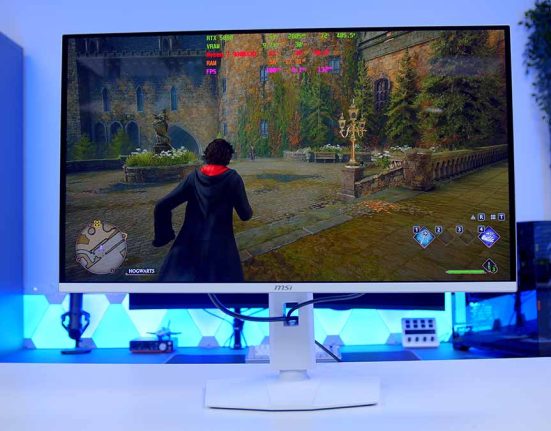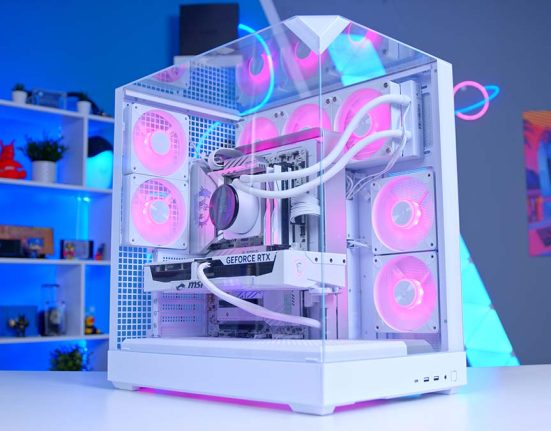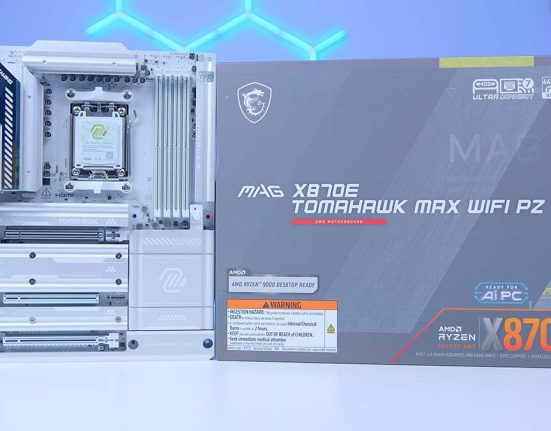The MPG 322URX QD-OLED is one of many MSI displays designed to offer high visual fidelity in combination with incredibly smooth responsiveness. The 322URX QD-OLED is a 4K gaming monitor featuring a QD-OLED (quantum dot-organic light emitting diode) panel and a blazing-fast 240Hz refresh rate, providing gamers with the ideal combination of speed and image quality without compromise.
This monitor joins MSI’s existing lineup of QD-OLED displays, further adding to their strong repertoire of options for both gamers and professionals. However, the primary consideration for most gamers is whether the price of this rather hefty display is worth what’s on offer. At $999.99, this QD-OLED monitor is not what we’d consider cheap. But if you’re the kind of gamer looking for the crème de la crème when it comes to gaming displays, the MSI MPG 322URX QD-OLED might be the monitor you’ll want to consider. But how does this monitor perform? This is a key metric we’ve put to the test in this review.
In this article, we’ve assessed and tested the MPG 322URX QD-OLED, examining its specs, design, features, and gaming performance to determine if it’s a worthwhile option in the current 4K QD-OLED market.
Buy the MSI MPG 322URX QD-OLED on:
Specification
If we compare the MSI MPG 322URX QD-OLED to its 27-inch sibling (the 272URX QD-OLED), these monitors are very similar on paper. The biggest separator between the two is the size, which is one of the most essential elements of a display that affects the price. The 322URX QD-OLED is 32 inches, as denoted by the “32” at the start.
The 322URX QD-OLED uses a 4K QD-OLED panel, the same as the MPG 272URX. As a 4K display, visuals are designed to be incredibly vibrant. Pixel density is slightly weaker, unfortunately, but the brightness of the quantum dots helps minimise things like the screen door effect up close. Additionally, you can enjoy the 240Hz refresh rate at this resolution thanks to UHBR20, which is supported through the two DisplayPort inputs.

In terms of the rest of the specs, the 322URX QD-OLED and 272URX QD-OLED are essentially the same across the board. Response time is 0.03ms GtG (grey-to-grey), and peak brightness is 1000 nits. Both displays share similar display inputs, USB ports, and the VRR technology they use: G-Sync. I’m not surprised that a lot of the hardware is the same because, ultimately, the 272URX QD-OLED is an excellent display. Therefore, it makes sense to implement the same hardware in a larger version that caters to those who want more bang for their buck in terms of screen size.
| Key Specs | MSI MPG 322URX QD-OLED |
|---|---|
| Screen Size | 32″ |
| Max Resolution | 3840 x 2160 |
| Refresh Rate | 240Hz |
| Response Time | 0.03ms GtG |
| Colour Gamut | 98% Adobe RGB 99% DCI-P3 100% sRGB |
| Peak Brightness | 1000 nits |
| Contrast Ratio | 1500000:1 |
| Panel Type | QD-OLED |
| Display Inputs | 2 x HDMI 2.1 1 x Displayport 2.1a 1 x USB Type-C (DP Alt) |
| Additional IO | 2 x USB 3.2 Gen1 Type-A Downstream 1 x USB 3.2 Gen1 Type-B Upstream 1 x Earphone Jack |
| VRR Technology | G-Sync Compatible |
MSI MPG 322URX QD-OLED Design
Taking a look at the design, the 322URX QD-OLED and 272URX QD-OLED are more or less the same, both aesthetically and regarding the physical design. The biggest difference between the two is size; however, MSI has largely retained the same design across both models.
To briefly summarise, the monitor has a primarily black plastic frame. This range of monitors has a predominantly plastic body, including the outer frame, chassis, and stand. It features a slim bezel, allowing gamers to enjoy more screen real estate while maintaining a minimalist look that’s fairly neutral, leaning neither too heavily towards gaming nor workstations.

The main caveat of using plastic over something like metal is that the monitor does feel and look a bit cheap, but I imagine MSI has done this to minimise costs. The rear of the monitor features a bulkier panel, where you’ll install the stand. There’s also some vents along the top here, and a small set of RGB LEDs lighting up the MSI logo in the centre. It’s here that you can also spot the thin panel design, which is a nice touch.

The monitor stand is incredibly easy to assemble. It comes in two parts: the large foot and the stand, which connect via a screw with a ring at the bottom. The stand then snaps onto the stand with a latch, making it easy to remove. The MPG 322URX QD-OLED also supports 100mm x 100mm VESA mounting if you’d prefer to use an arm or wall mount.
That stand feels sturdy and robust, and offers plenty of adjustment and stability, allowing you to find the right lighting angle with some trial and error. Additionally, the rubberised feet on the bottom minimise the amount of wobble from the display, which is a nice touch.
While the design of the 272URX QD-OLED and 322URX QD-OLED hasn’t changed significantly, I don’t see this as a bad thing. Since this is essentially a larger version of the 27-inch model, it follows that it retains the same design language.
Features We Like
Excellent for Gaming
To test responsiveness and visual fidelity, I decided to launch Hades 2. This particular game is a fast-paced roguelike with a vibrant and unique art style, making it the perfect choice to test how this monitor holds up. During my gameplay run, I managed to get some unique boons and create some fairly chaotic on-screen effects. There wasn’t a single point where I experienced any lag or where the monitor struggled with artefacts or tearing.
In terms of visual fidelity, I cranked the settings up to maximum and enjoyed a buttery-smooth 4K resolution. Hades 2 is a beautiful game, and the organic light from the QD-OLED panel provides crisp imagery, bright whites and deep darks. Unsurprisingly, the 32-inch version of the URX QD-OLED range is a strong competitor in terms of performance alone.
Plenty of OLED Care Options
OLED screen burn-in is a problem that plagues all OLED-based displays with prolonged usage. However, MSI aims to minimise this with convenient built-in software features that are designed to reduce the risk. Pixel Shift, for example, moves the screen’s pixels at regular intervals to prevent static imagery. Pixel Refresh activates every 4 hours, again minimising the risk of burn-in. There are several additional features available within the OSD of this monitor, all of which help maintain your QD-OLED panel.
Features We Don’t Like
Utilises AI Features
This is something that we covered in our review of the MPG 272URX QD-OLED, so we’ll keep it brief. AI features are currently on opposing sides of the fence. Some features will get you banned in online games if detected, and some need more development time. The AI features of the MPG 322URX QD-OLED, while relatively soft, can provide an advantage in online games, and considering a lot of Esports games use kernel-based cheat detection, this is the kind of thing that can get you banned if cracked down on. So if you play a lot of competitive online games, it’ll be worth keeping these AI features off.
Cumbersome for Multi-Monitor Setups
If you’re like me and have a dual-monitor setup with limited desk space, selecting the right-sized monitor is incredibly important. While I can understand the mass appeal of larger displays, it immediately creates a problem for those with two or three monitors. It can be challenging to space them out appropriately and put them together if they’re curved. Placing them on a monitor arm can be precarious if the arm cannot support the weight properly. Either way, it’s worth keeping in mind that 32-inch displays can be cumbersome for those with more than just one monitor.
Colour Accuracy & Image Quality
Colour accuracy and image quality are the true tests of whether a monitor offers a solid visual experience. So, we’ve used our colour calibrator along with some gaming benchmarks to determine whether this display can keep up with other QD-OLED panels.
After firing up the DataColor Spyder X Pro calibrator, we ran through the wizard to calibrate the monitor and display colours accurately. We do this to see how the monitor handles a range of different colours and to see if MSI’s advertised colour gamut ratings are accurate. The graph shows that the MPG 322URX QD-OLED is a highly colour-accurate display.

With a 96% rating, this is just 3% lower than what MSI advertises. The MPG 322URX QD-OLED sits alongside a couple of other 4K displays, including the AORUS FO32U2P and ROG Swift OLED PG49WCD. MSI’s OLED technology ensures that colours are vibrant or deepened when circumstances demand it, resulting in true-to-life representation. Although our result is 3% lower, the actual difference in application is likely to be pretty negligible.
In terms of image quality, I was impressed during my gaming time on this display. The difference between OLED and standard LCD panels is astonishing, and I believe the vast majority of OLED owners will likely never return to IPS or VA monitors. All of the imagery on the screen feels and looks incredibly crisp and vibrant, and gaming in high-visual-fidelity titles was a dream.
Conclusion
MSI MPG 322URX QD-OLED

Product Name: MPG 322URX QD-OLED
Brand: MSI
-
Features
-
Design
-
Performance
-
Value For Money
Summary
The MSI MPG 322URX QD-OLED is an excellent value 4K QD-OLED display. Throughout our testing, this monitor delivered clean and crisp visual fidelity, striking a balance with speed, enabling you to enjoy fast-paced content with minimal drawbacks. Much like what we said in our review of the 272URX QD-OLED, MSI has taken the ‘if it ain’t broke, don’t fix it’ approach yet again, demonstrating that excellent hardware doesn’t need to undergo numerous changes in different models. This monitor offers all of the great features that we saw on the 27-inch version, including the somewhat annoying AI features.
My only qualm, is that I think 32-inch monitors are too big. They’re cumbersome for multi-monitor setups, more complex to set up due to their weight and size, and are at risk of causing sag with monitor mounts for the same reason. If you prefer a larger display, the MPG 322URX QD-OLED is definitely worth considering. However, unless you’ve ample desk space or sturdy monitor arms, it may be more suitable to opt for the 27-inch version. Overall, the pricing feels right considering what’s on offer, with similar monitors coming in around the same price. Despite its size, it doesn’t detract from the excellent hardware under the hood.
Pros
✅ Fast and crisp visuals
✅ OLED Care settings
✅ Ideal for gaming
Cons
❌ Use of AI features
❌ Size is cumbersome
❌ Mostly plastic design


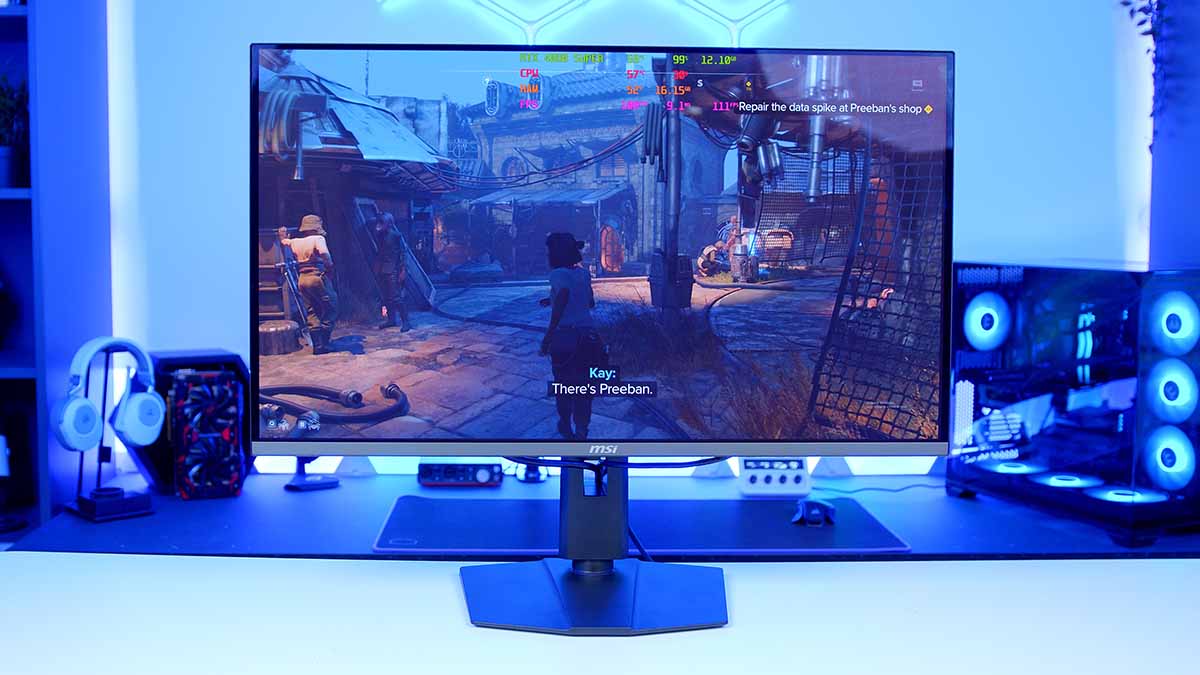
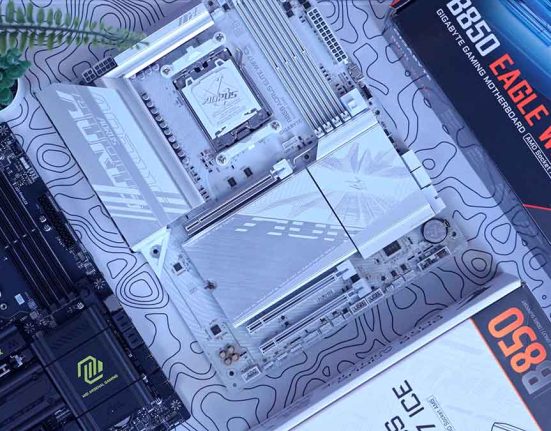
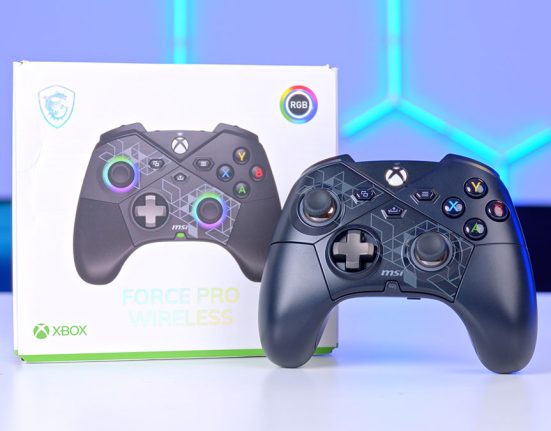
![FI_[SR186] Montech XR Wood + 9060 XT](https://geekawhat.com/wp-content/uploads/2025/10/FI_SR186-Montech-XR-Wood-9060-XT-551x431.jpg)
